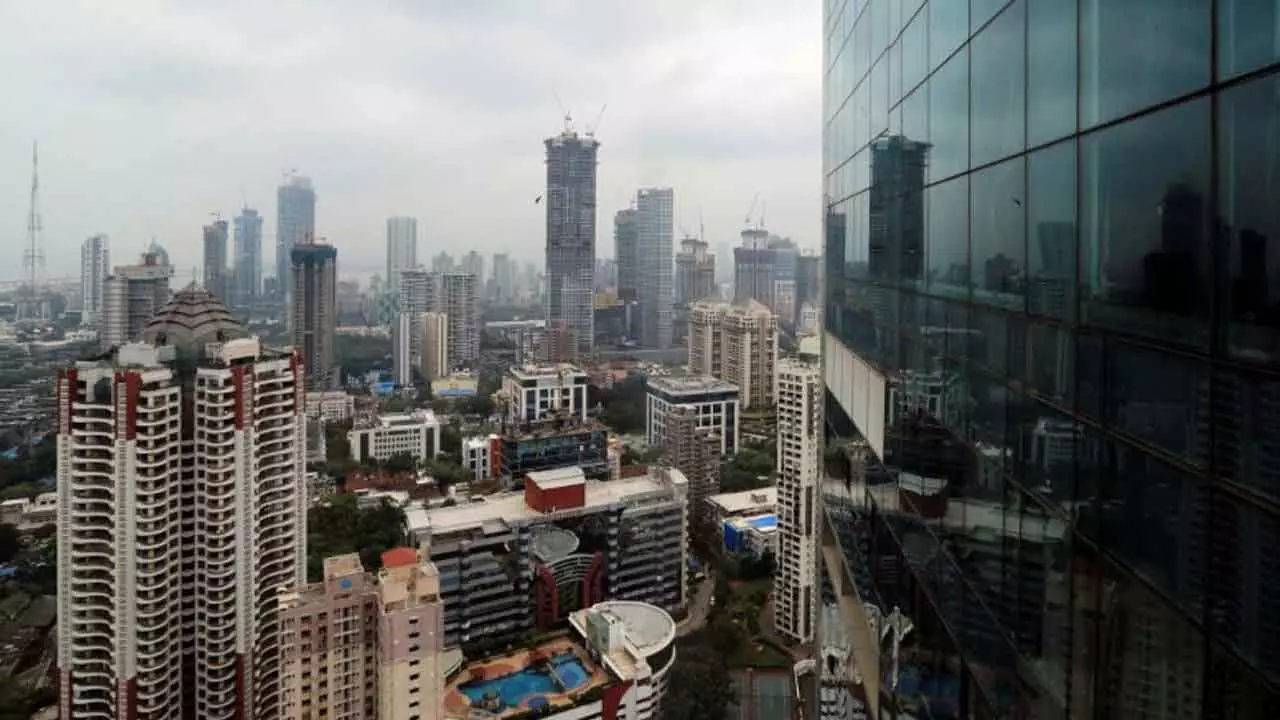Mumbai, Delhi, Bengaluru Draw 62% of Real Estate Equity in India
Land and built-up office assets led equity inflows as India’s real estate drew $26.7B in three years, with Mumbai alone contributing $6.9B.
image for illustrative purpose

A joint study by CBRE South Asia and the Confederation of Indian Industry (CII) shows that equity capital flows into India’s real estate sector between January 2022 and December 2024 reached $26.7 billion, with Mumbai capturing the largest share at $6.9 billion. The “Bricks & Billions – Mapping the Financing Landscape of Real Estate” report attributes this concentration to the availability of investment‑grade projects, established infrastructure and a maturing regulatory framework.
The analysis finds that Mumbai, Delhi‑NCR and Bengaluru together attracted roughly $16.5 billion—about 62 percent of total equity investment. Mumbai alone accounted for approximately 26 per cent of the inflows over the three‑year period. In contrast, tier‑II cities received close to $3 billion, representing nearly 10 per cent of the national total.
Site acquisition and raw land development led the equity investment mix, drawing 44 percent of capital, while built‑up office properties claimed 32 per cent. Other sectors such as residential developments and retail assets accounted for the remaining share. Among tier‑II markets, land and development plots captured 47 per cent of the $3 billion, followed by industrial and logistics projects at 25 per cent.
“The report highlights shifts in investor focus toward markets offering scale and certainty,” said Anshuman Magazine, chairman and CEO for India, Southeast Asia, Middle East and Africa at CBRE. “Capital deployment in data centres, healthcare and co‑living formats is gaining traction alongside traditional sectors.”
CII Western Region chair Rishi Kumar Bagla noted that enhanced due diligence procedures and growing ESG requirements have fostered a more structured funding environment. “One in five investors now factor green certification into their investment decisions,” Bagla said.
Outlook for 2025 points to continued activity in public equity, with another major REIT expected to list later this year. Flexible office operators are also preparing initial public offerings, reflecting sustained demand for adaptable workspace solutions.
With the Reserve Bank of India shifting its policy stance toward growth support, borrowing costs are likely to decline following two repo rate cuts earlier this year. Lower financing rates could spur fresh land purchases and project launches, especially in residential and mixed‑use segments.
Developer land acquisitions in 2023–24 totalled $5.8 billion, underlining confidence in future supply pipelines. Residential and office portfolios remain central to most investment strategies, driven by ongoing urbanisation and corporate expansion in technology, banking and manufacturing.
Alternate asset classes such as data centres and co‑living communities are projected to attract over $1 billion in equity inflows in 2024, supported by government incentives and demographic trends. Data centre land acquisitions rose fifteen‑fold in 2024, while shared living schemes have benefited from rising rental yields and preference shifts among young professionals.
Sustainability features prominently in investor criteria, with a survey by CBRE indicating that nearly 20 percent of equity investors plan to back green‑rated buildings in the short term. The premium for certified sustainable projects is expected to firm up as India’s net‑zero commitments take shape.
India’s real estate equity investment landscape is thus marked by deepening participation in core gateway cities, emerging interest in tier‑II markets and a growing appetite for future‑oriented asset classes. As capital markets evolve, both domestic and foreign investors are poised to allocate fresh funds across a diversified range of property types.

